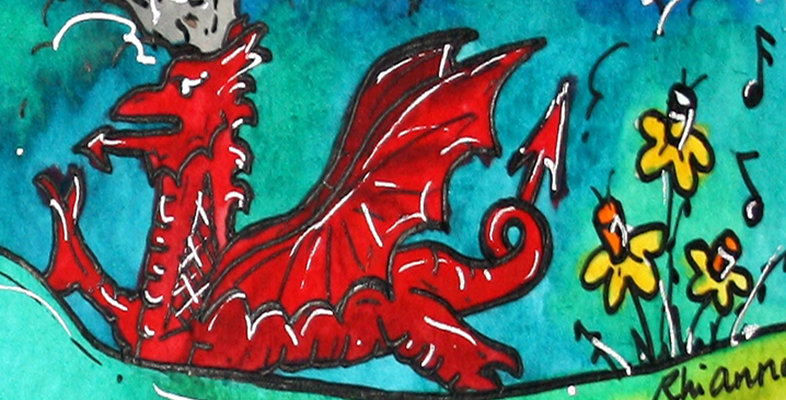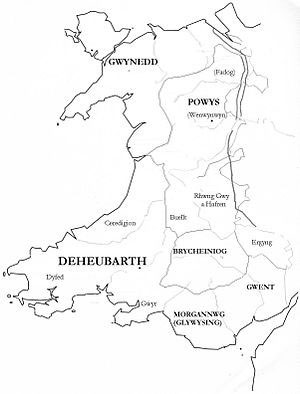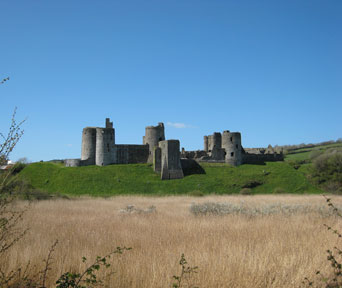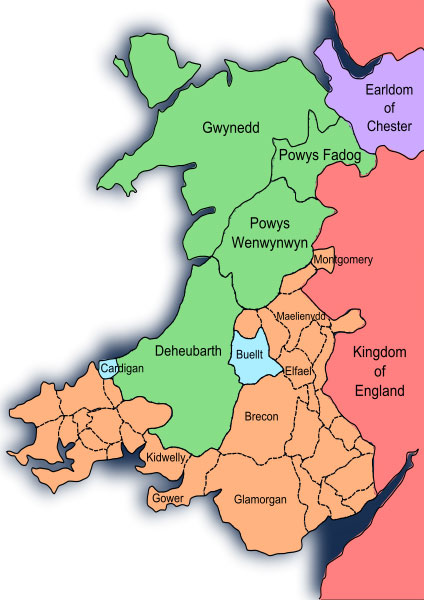1.3 Early shaping of a Welsh identity
External pressures from the English and others helped mould the consciousness of the Welsh, and of being part of a distinct people. When the Romans arrived in Britain they built a network of forts and encampments across Wales, including the major military bases of Caerleon in South Wales and Caernarfon (Segontium) in North Wales. It took them seventeen years to conquer Wales (AD 48–75) and bring all five main tribes of Wales under a single authority, which then lasted for some 300 years. Apart from physical artefacts such as roads, one of the main legacies of this period was the addition of around 800 Latin words to the Brittonic language, from which Welsh developed terms such as pont for bridge, ffenestr for window, eglwys for church. With the decline and withdrawal of Roman influence, Wales fragmented again into separate kingdoms: Gwynedd, Powys, Dyfed, Gwent and so on.
After the Norman conquest of England in 1066, Wales was encroached upon by powerful Norman landowners who sought to extend their territories from across the English border. These ‘Marcher Lords’ (barons), appointed by the King of England to protect the border between England and Wales, built castles, established monasteries and created towns, often inhabited by non-Welsh people – the first phase in the urbanisation of Wales. For example, the town of Montgomery in Mid Wales was founded by Roger de Montgomerie, a Norman nobleman.



